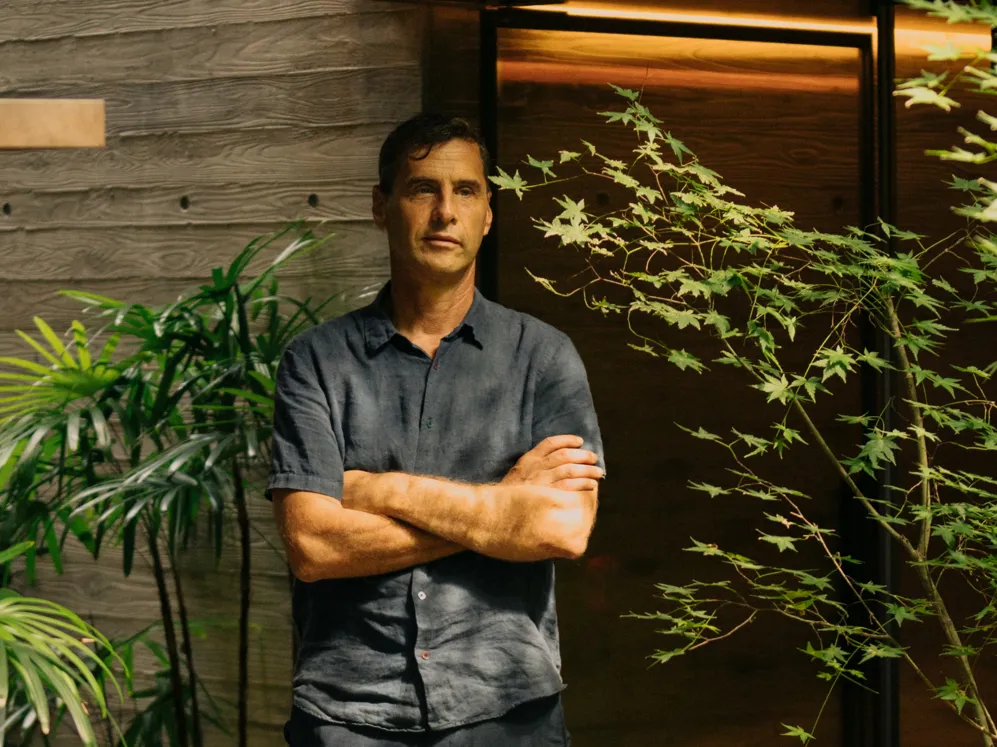
Words Steph WadeImages Khoo Guo Jie
After all, his life’s path took a pivotal turn when he decided to spend the summer in Tokyo during university, interning for Takenaka Koumuten before entering the studio of the legendary architect Fumihiko Maki. Moussas left his native New York City for Japan in the early 1990s, and has stayed put comfortably since then—there’s just something about the city, its distinct culture, its pristine gardens, its tranquil baths, and its unparalleled architecture that speaks to his life’s philosophy.
From teahouses to temples, Moussas has designed a number of different buildings over the years, the latest of which is Genji Kyoto, a charming boutique hotel located on the Kamo river with breathtaking views of the river and mountains. The hotel’s atmospheric and contemporary feel can be attributed to a combination of materiality, gardens, and storytelling: the latter of which interprets the “Tale of Genji” through various design expressions and spatial techniques.
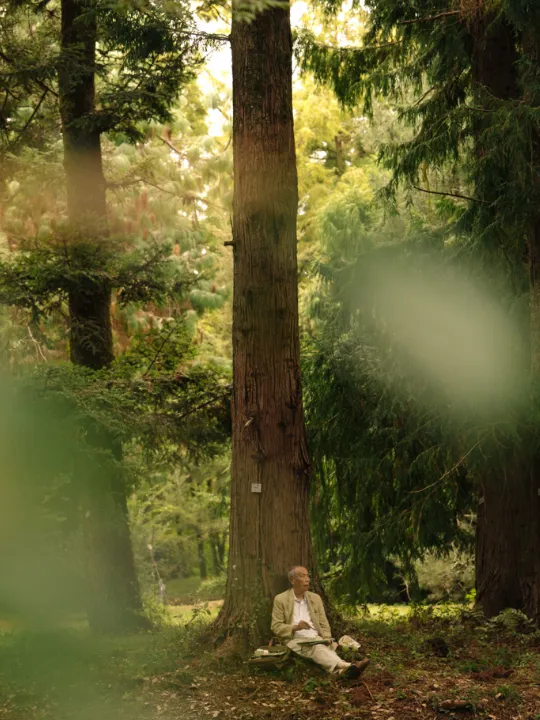

I think everything in life is experiential. So the experience of everyday life, your interactions; everything affects the way you perceive things. It's all based upon how you encounter it, not just how you see it. So, I deal with architecture the same way that I deal with life. Every project has a story to tell and if I haven’t done something like it before, then there is a lot of learning potential for me, which I find very attractive.
I grew up in New York, on Long Island, right outside of New York City. So I had a very urban life. Then I went to graduate school in Boston for five years; Boston is a really great place. There are a lot of universities there—Harvard, MIT, Boston University—it’s a real college town, so of course, I had a lot of impactful times there. But in my last year of graduate school, I came to Japan for an exchange for three months in the summertime. The experiences I had here ended up transforming my thesis project, and I actually changed the whole subject and started from scratch. I’m really interested in buildings that are infused with a deep sense of Japanese culture.
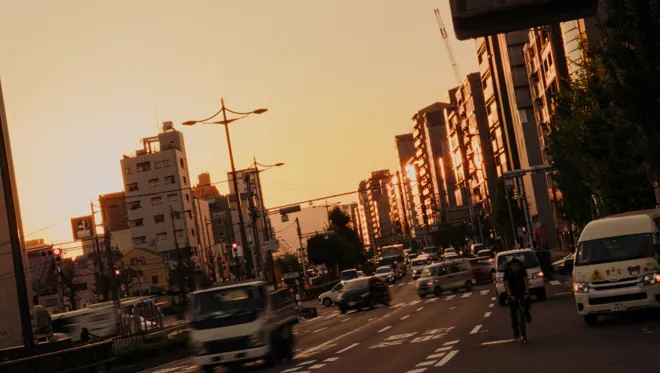
Geoffrey P. Moussas
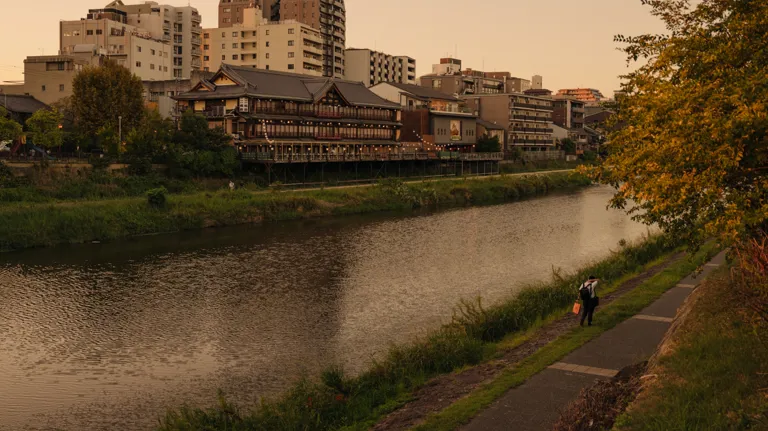
My mother was an artist, my father was a passionate literature professor, and my sister works in music. So there’s something there for sure. I think architecture lies more on the art side than on the technical side, despite its pragmatism. Then there are other things involved like physics and psychology. It’s so layered; there is a lot of complexity to it.
It was not for culture, but actually for design. I didn’t really know anything about Japan at that point, except that the buildings here are built much better than anywhere else in the world. Takenaka let me do an internship—they bring to life the projects for all the biggest architects in Japan—so I was able to go to job sites and see Tadao Ando’s work being built, which was pretty exciting. Afterwards I wrote to Maki and Associates [the eponymous studio of Fumihiko Maki] out of the blue asking for work, and got a response from Mr. Maki himself. You could say I was taken aback! It was very nurturing. They taught me pretty much everything I know.

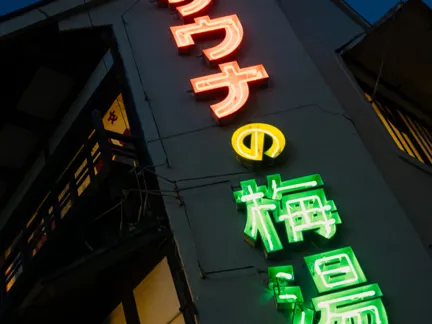
One part is that after living for five years in fast-paced Tokyo, I was seeking more of the depth of culture they have here. Before Tokyo was the capital city of Japan, Kyoto had been for 1,200 years. So you feel a level of culture that is way deeper than New York, Boston, or even Tokyo. The other part is the nature and slowness: Kyoto is surrounded by beautiful mountains, and they’re right there—I can ride to them in just five minutes and be hiking within another five minutes. For children, their playgrounds are virtually all temple grounds to explore, and some of the best gardens in Japan and even the world are here.
I’m drawn to projects that have a good cause, because as an individual I’m only able to make strides on a small scope. It’s about the story of the project: even if it’s a small one with a modest budget, it doesn’t matter to me. If I feel there is a nice idea behind it or if it’s new to me, I love to take it on.
Geoffrey P. Moussas
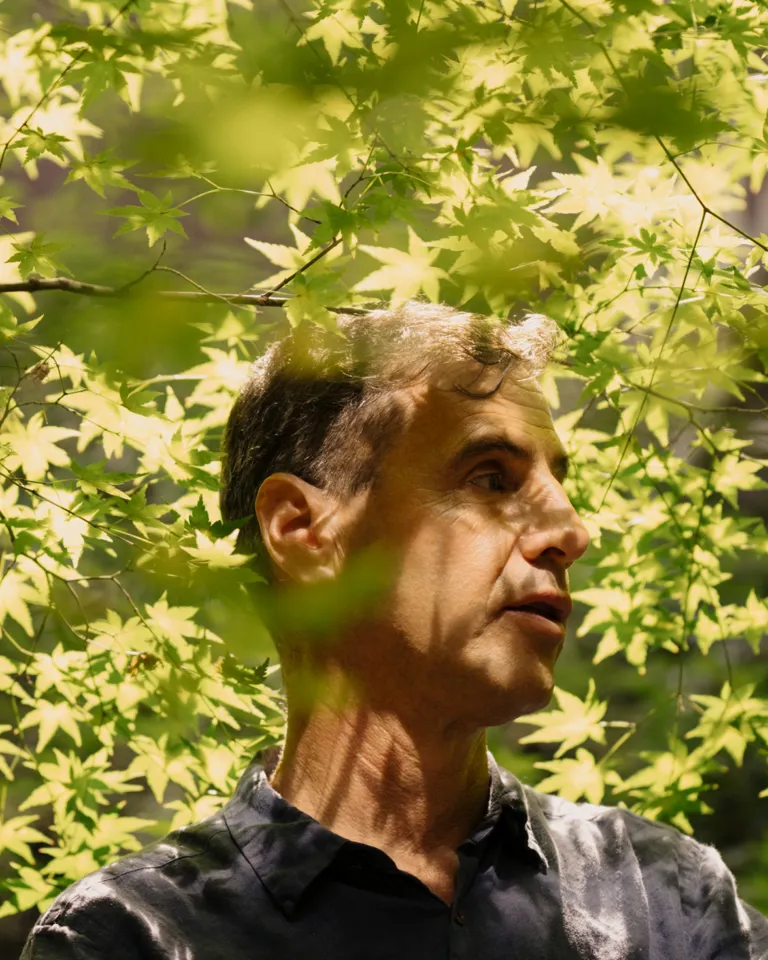
Yes, exactly. Narratives from “The Tale of Genji”, which is a classic 1,000-year-old Japanese novel, gradually started to infiltrate the design. I made sure that we were careful not to confuse clichéd ideas of Japanese culture though, such as the incongruous use of shoji, with our more honest and modern application of time-tested design principles. Another thing that is central to the hotel’s identity is nature: specifically rivers, temples, and gardens; there are some nearby that have been largely influential on the hotel’s concept.
Well, there’s a big emphasis on gardens of course, as is the case for the culture at large, along with blending the exterior and interior spaces into one seamless entity. The inspiration for including the pocket garden comes from the garden in my house that I have been living in for the last 25 years. Gravel from the pocket gardens flows into the rooms from the exterior, and baths have beautiful views of the outdoors—it should really feel like you’re outside, even when you’re not. The lighting system also features the motifs and qualities of flowing water.
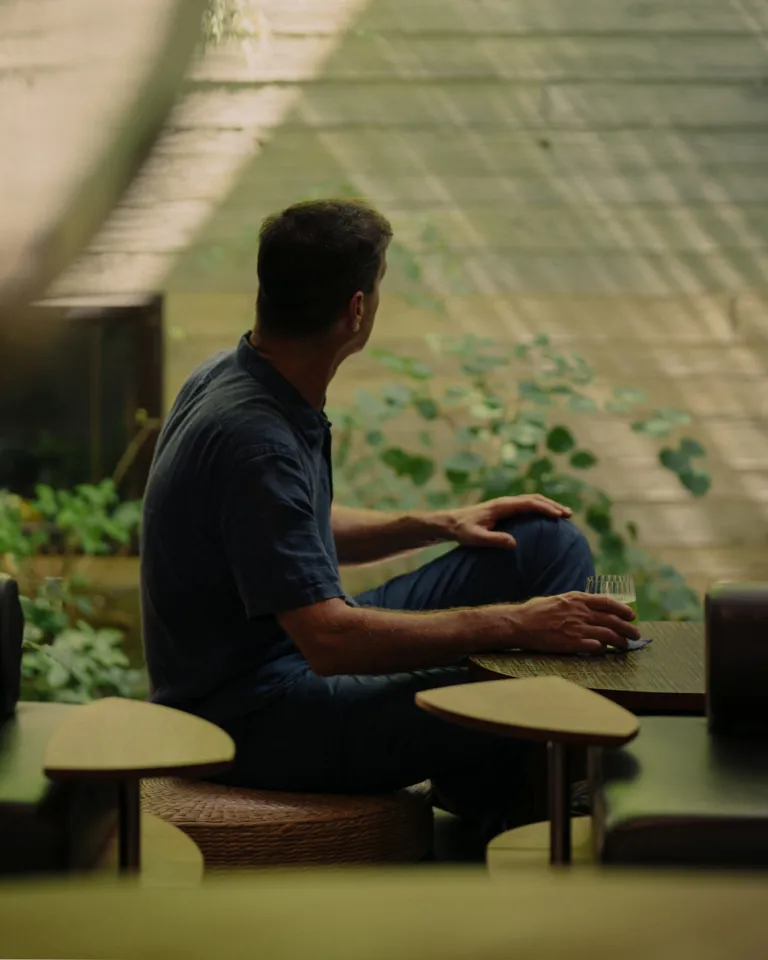
Garden Design Marc Peter Keane
Absolutely. My ideas come when I am sitting next to the garden peacefully or floating in the bath, because I can see the garden from my bath. Being in that contemplative, almost nodding-off state is when I can come up with the best solutions to the most perplexing problems.
It would be great if we could have different options besides concrete, or figure out a new technology that is not as carbon intensive. The best would be to do for concrete what we have with automobiles, which presently have one of the largest carbon footprints, but which are well on the way to becoming carbon neutral. This matters greatly, since of course sometimes you can’t avoid it, especially when you need to make buildings fireproof for example. People are really making progress with the use of wood as a primary building material, because it’s much lighter on the environment—but overall we need the innovations to be happening at a smaller, more feasible scale.